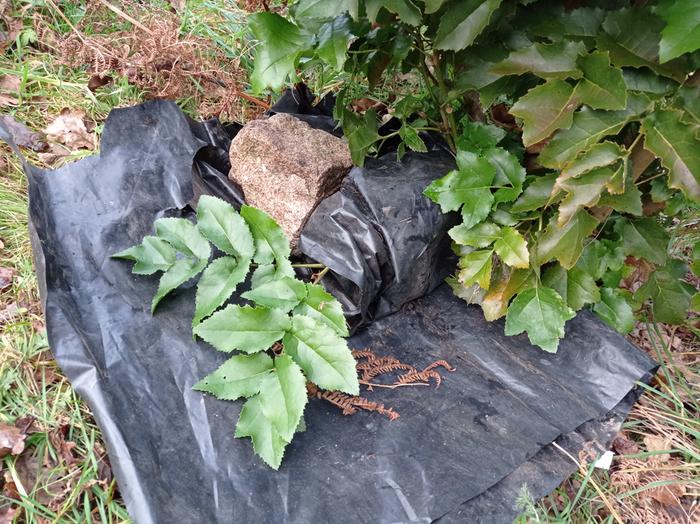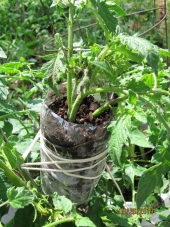posted 3 years ago
I already did this successfully last year. This method works very well and i think that one can multiply and grow almost any plant on its own roots this way. To begin i choose a low growing side branch on my plant and trim away the leaves in the middle. A small side branch growing close to the ground like this is ideal. I cut off the leaves in the mid section. Using a sharp knife i carefully open the stem with a long cut. I try not to cut further up than half of the thickness of the stem. Apply rooting hormone to the wound (it probably works without hormone too, but i like to use it). It's very important to wedge one or two small bits of matchstick into the cut to force the wound to stay open. I cut a plastic pot leaving two holes at the correct height to accommodate the branch passing through. Put the pot in place, taking care that the cut is roughly in the middle and that the bits of matchstick stay in place. Carefully fill up the pot with garden soil (not store-bought earth) and water well. Use black plastic to suppress weeds and to wrap the pot using a stone if need be. Wrapping the pot keeps the moisture in and reduces weed growth to a minimum. Control once every two months to be sure the soil is moist and remove weeds.
One year later, next winter, roots will have formed. You can then cut the branch from the mother tree and cut some of the leaf growth back. A few more months in half shade and always watering well you will have a new plant that is genetically identical.
I reckon almost any type of perennial plant can be multiplied this way.
www.permabreed.blogspot.com
IMG_20211228_145338.jpg
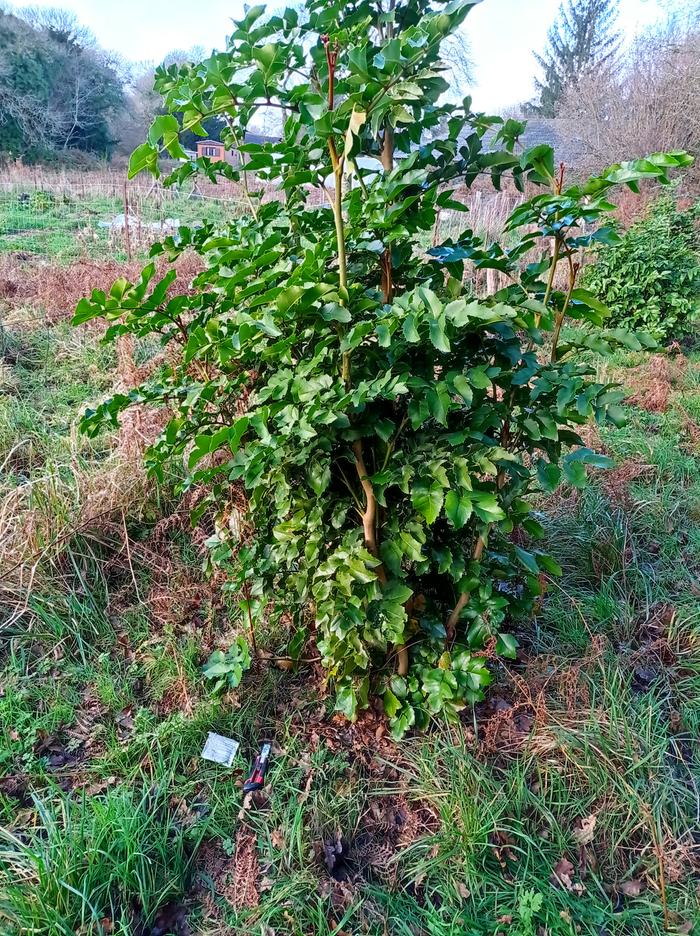
IMG_20211228_145352.jpg
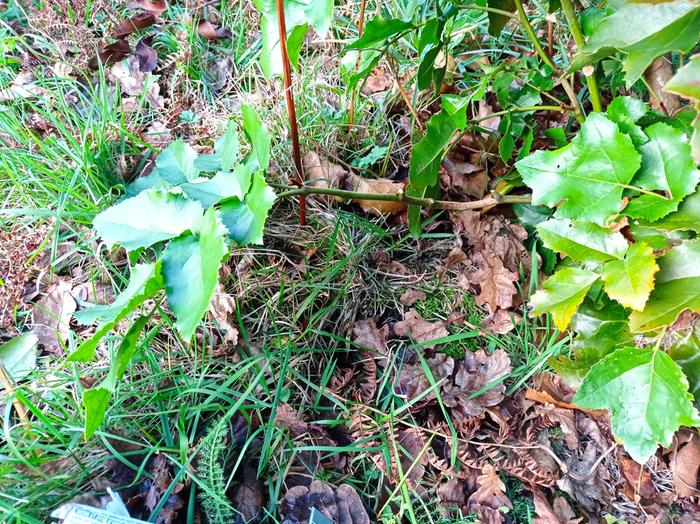
IMG_20211228_145752.jpg
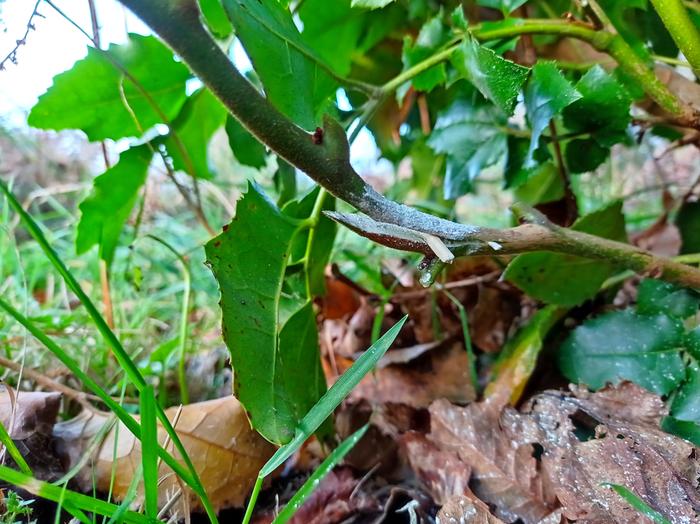
IMG_20211228_150016.jpg
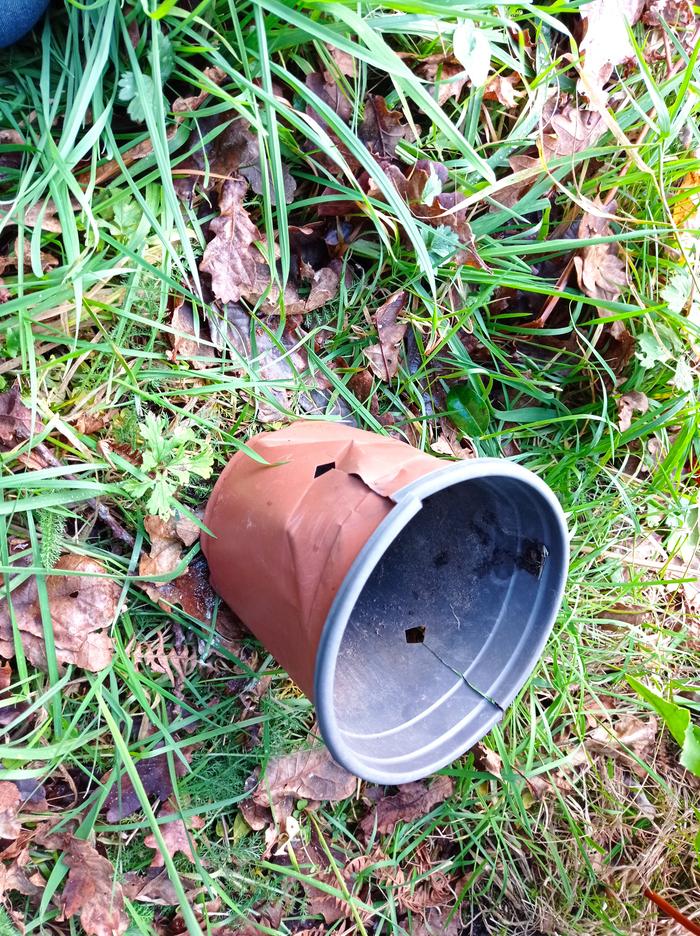
IMG_20211228_150109.jpg
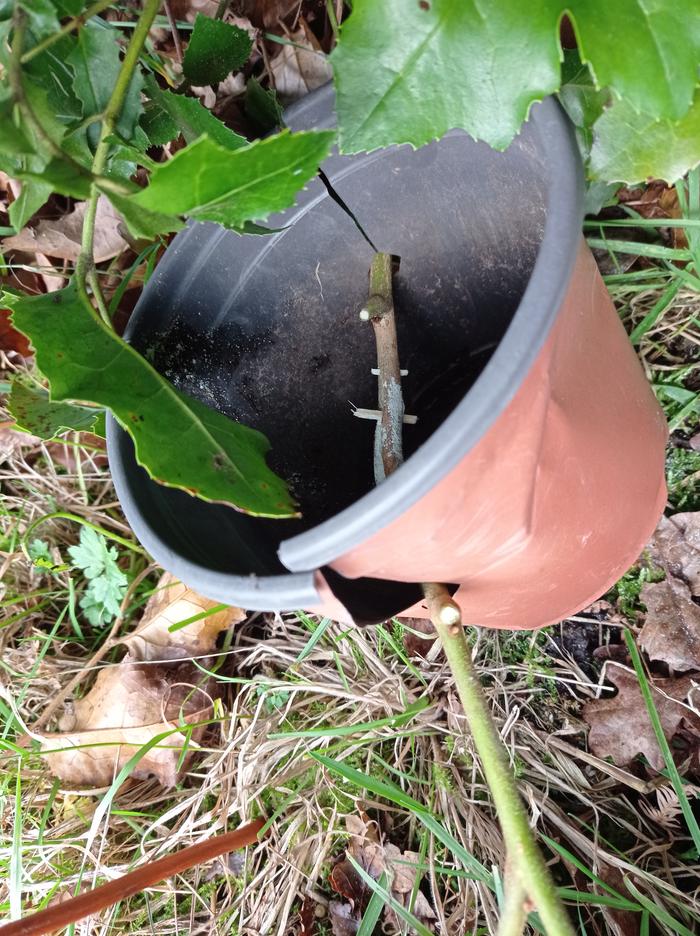
IMG_20211228_150640.jpg
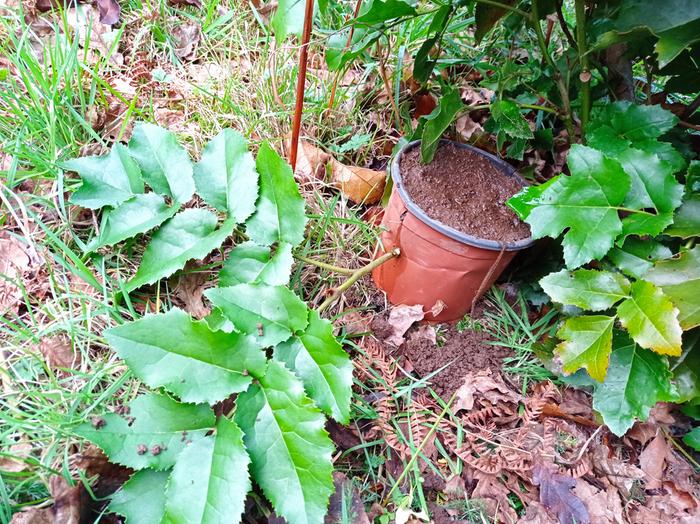
IMG_20211228_151633.jpg
